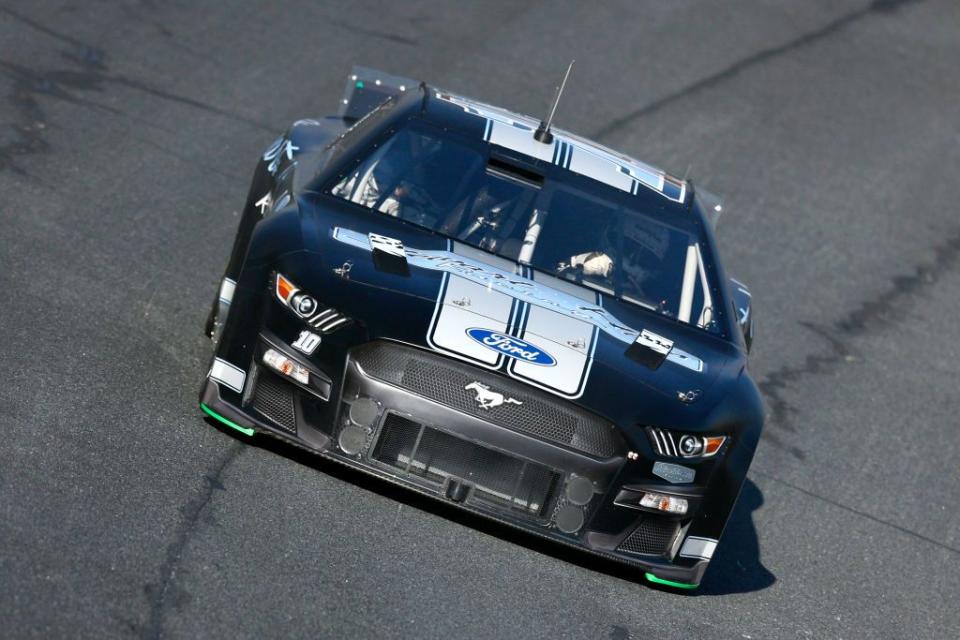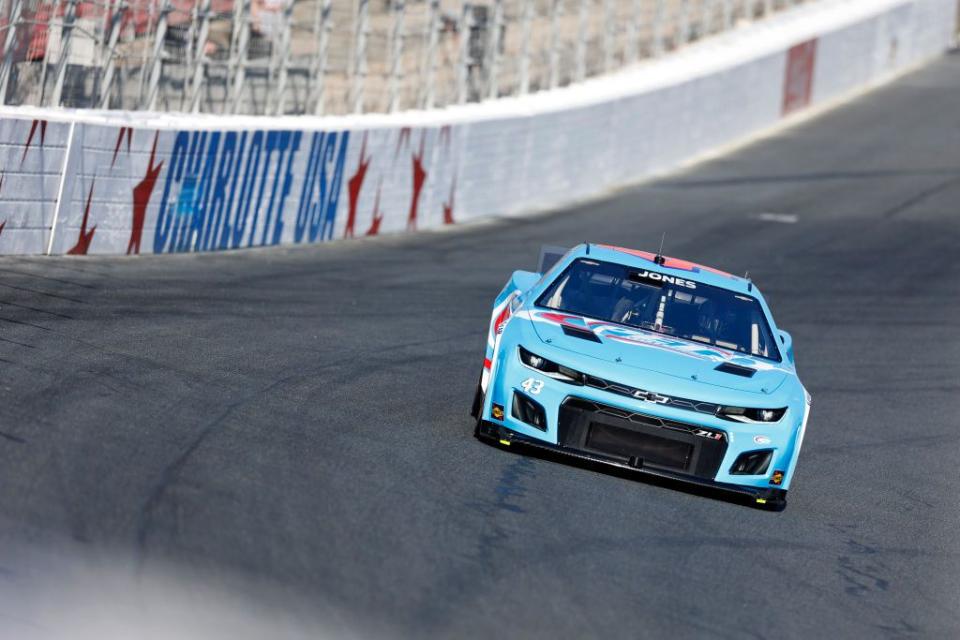Brad Keselowski Says Drivers Will Have to 'Man Up' on Next Gen NASCAR Cars

Despite development that started in January 2019 and a series of 16 tests, the car remains somewhat a mystery as NASCAR moves into its short and busy off-season.
The hope, also, is that the new car’s generally slower speeds will place more importance on the drivers’ skill sets.
There will be at least four more tests of the car—Dec. 15 and 17 at Charlotte Motor Speedway, Jan. 11-12 at Daytona International Speedway and Jan. 25-26 at Phoenix International Raceway.
There have been tests, and there will be even more tests, but NASCAR’s Next Gen Cup race car is steadily making its way to a track near you.
NASCAR’s much-ballyhooed new car—the one with the sleek lines and the bigger tires and the somewhat strange off-set numbers and the weirdest thing of all (one lug nut!)—is scheduled to be driven in anger for the first time Feb. 6 in the Clash at the Los Angeles Memorial Coliseum.
Before the debut, however, there will be at least four more tests of the car—Dec. 15 and 17 at Charlotte Motor Speedway, Jan. 11-12 at Daytona International Speedway and Jan. 25-26 at Phoenix International Raceway.
Despite development that started in January 2019 and a series of 16 tests, the car remains somewhat a mystery as NASCAR moves into its short and busy off-season.

“There are so many unknowns,” said Joey Logano. “It’s hard to predict what next season is going to be. If someone is saying now how they’re going to run next year, they’re full of crap. Nobody knows.
“What we did in the past with the Gen 6 car won’t really be successful. You have to think outside the box with this new car. I think Team Penske might have a little advantage because we’ve raced so many things outside NASCAR. We’ve seen the way sports cars race and Indy cars race. Understanding how they do things has to give us some kind of advantage. But there’s so much to learn with this car.”
The change from one car to the next is one of the most dramatic switches in NASCAR history. Teams will be building cars from parts produced by suppliers as opposed to constructing them in-house from start to finish.
From the beginning almost three years ago, NASCAR’s concentration has been on making the new car budget-friendly, improving its relevance to street-car models and juicing the level of competition. The Cup racing product was generally good in the 2021 season, a result, in part, of the fact that the Gen 6 car has been on track for so long, but its replacement was eyed three years ago as part of NASCAR’s continuing plan to keep pace.

The hope, also, is that the new car’s generally slower speeds will place more importance on the drivers’ skill sets.
“The car is quite a bit slower than the older Cup cars but handles really bad, which I think is a good thing,” said Brad Keselowski. “I think we had fallen into a spot where the Cup cars were driving too well. Now you’ve got to ‘man up’ to drive these cars.
“They’re not super-fast, but they’re very challenging to drive. If you make a small mistake you pay for it big. I think it for sure put more emphasis on the driver who makes fewer mistakes and the whole risk-versus-reward proposition.”
The new car also is expected to provide a boost of sorts for the tour’s mid-range teams, in part because of expected lower operating costs and parts and pieces that will be identical to those used by top-flight teams.
“I’m excited about the Next Gen car kind of leveling the playing field and us being able to show what kind of team we really are,” said Front Row Motorsports driver Michael McDowell, the winner of the 2021 Daytona 500.
“We’ll all have the same parts and pieces from single-source suppliers -- chassis, suspension, shocks. With the current car, the teams were building everything. You couldn’t catch up as a small team. You couldn’t out-develop Hendrick Motorsports with 400 or 500 employees when we have 70.
“That should slow down. Obviously, the best teams should still be the best because they have the best people, but you want to be able to at least have a shot to contend when you get it right, and I think this car will do that.”

